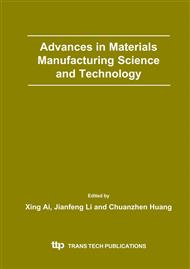p.563
p.568
p.573
p.577
p.582
p.587
p.592
p.596
p.603
Finite Element Simulation of the Orthogonal Metal Cutting Process
Abstract:
In this paper, a finite element model of a two-dimensional orthogonal metal cutting process is used to simulate the chip formation, cutting forces, stress, strain and temperature distributions. Two deformable parts are involved in this model: the workpiece and the cutting tool. To make the results of the simulation agree the orthogonal cutting test better, the separation surface between the chip and the machined surface is not predefined in this simulation. The chip-separation criterion is based on the Johnson and Cook law. This work will help as a reference to tackle more complex cutting processes such as oblique and discontinuous cutting.
Info:
Periodical:
Pages:
582-586
Citation:
Online since:
December 2004
Authors:
Keywords:
Price:
Сopyright:
© 2004 Trans Tech Publications Ltd. All Rights Reserved
Share:
Citation:


